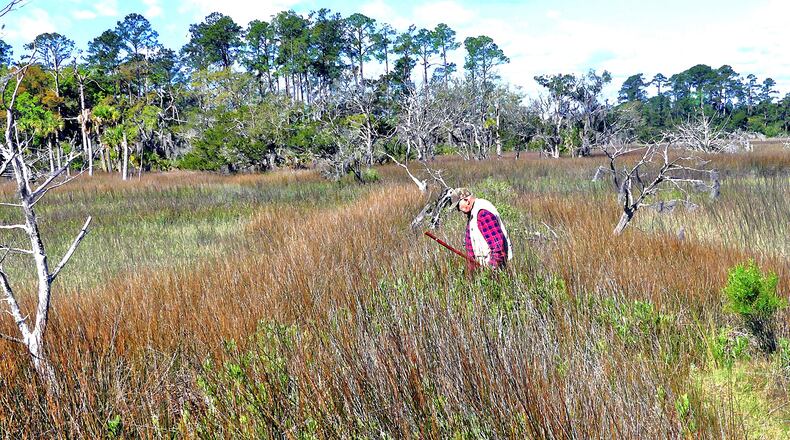After a two-year hiatus due to COVID-19, my most favorite event of the year (besides Christmas) was back last weekend — the Georgia Botanical Society’s annual Spring Wildflower Pilgrimage.
For me, there’s no better celebration of Georgia’s superb beauty and biodiversity in spring than the three-day pilgrimage — held each year in a different part of the state and offering several field trips to explore surrounding natural areas.
This year’s pilgrimage was based in Savannah, a starting point for exploring a variety of coastal habitats — salt marshes, marsh hammocks, maritime forests, river swamps and others.
It also offered a chance to blend nature with rich human history. In particular, one of the field trips I took was a botanical survey of Savannah’s famed 175-year-old Bonaventure Cemetery. I was torn between admiring the cemetery’s unique sculptures and architecture and keeping up with our leader Tim Estep, who was pointing out the native wildflowers, vines and other plants growing on and around the century-old graves — lyre-leaf sage, wood sorrel, rain lily, yellow passion flower vine and others.
The cemetery’s dominant flora, of course, is its magnificent live oaks (Georgia’s official state tree), draped in Spanish moss and sprouting resurrection ferns from massive limbs.
Another outing took us to the edge of a salt marsh along the Sandpiper Trail at Skidaway Island State Park. By far, the marsh’s most abundant plant is Spartina alterniflora, or marsh grass, which covers hundreds of square miles along Georgia’s coast.
The marshes’ second most common plant is black needlerush. Our leader Bobby Hattaway warned us that needlerush can seriously damage an eye or eardrum if poked by one of the plant’s needle-sharp stems.
Our walk ended on a marsh hammock, or small marsh island, with dense swaths of saw palmetto, one of Georgia’s four native palms. An effective treatment for prostate ailments is made from the plant’s black berries that appear in fall, Hattaway noted.
More information: gabotsoc.org/
IN THE SKY: From David Dundee, Tellus Science Museum astronomer: The moon is full Saturday night — the “Flower Moon.” The Lyrid meteor shower peaks at 20 meteors per hour on Thursday and Friday nights (April 21-22) in the northeast sky. Venus, Mars, Saturn and Jupiter are in the east a few hours before sunrise.
Charles Seabrook can be reached at charles.seabrook@yahoo.com.
About the Author
Keep Reading
The Latest
Featured


